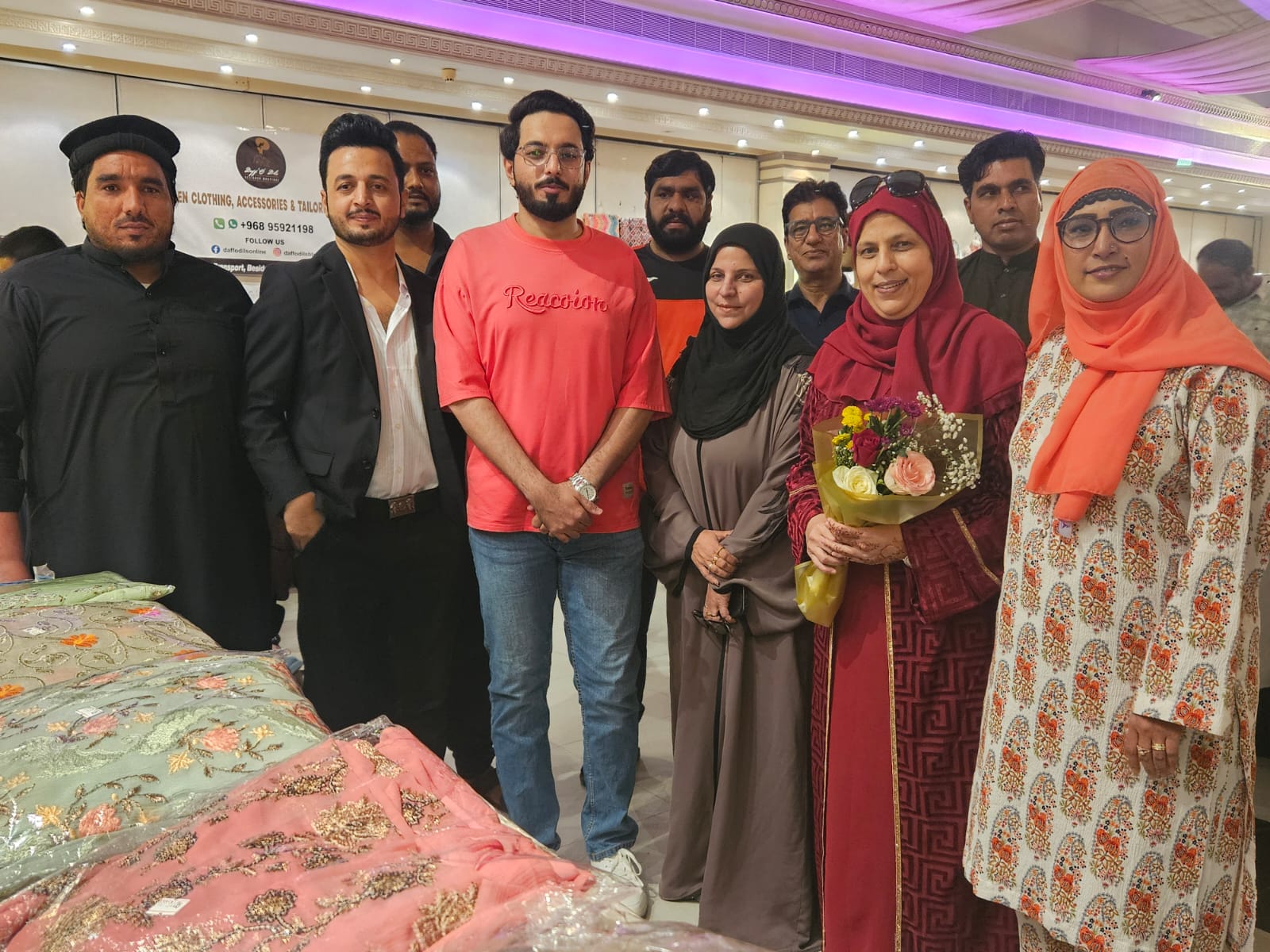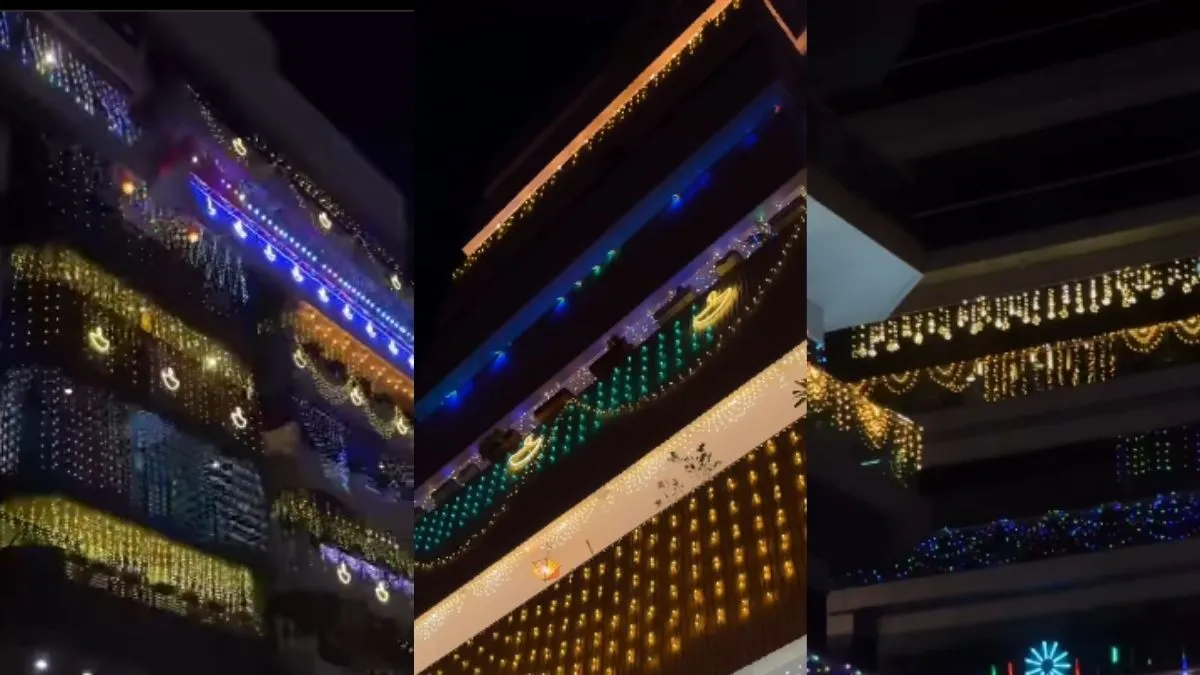The Museum of Omani Dress in Muscat is perhaps the only one of its kind in the entire country, piecing together Oman’s cultural legacy as reflected in its colourful costumes
PRAVASISAMWAD.COM
Clothes do, to a large extent, define personality and character, telling the world in no uncertain terms, who you are. Collectively speaking, when people of a community or social group dress in a particular way, they define their ethnicity, which turn evolves into an important facet of their culture.
Indeed over time, clothes have played a key role as cultural markers and have shown how progress brings about irreversible changes: Local characteristics tend to get difused and acquire a much more universal look, but somewhere along the way, the colourful and exotic flavours of ethnics values tend to get lost.
As ethnic markers, traditional attire with all its attendant accessories – jewellery, headgear, footwear, perfumes and cosmetics (henna and kohl, for instance) acquire a historical significance, reminding people about their cultural heritage.
The Museum of Omani Dress in Muscat (Mabelah) that functions under the Centre for Omani Dress is an initiative, perhaps one of its kind, by a group of dedicated and like-minded individuals to preserve for posterity the legacy of traditional Omani attire.

The museum is perhaps the only one of its kind in the entire country, piecing together Oman’s cultural legacy as reflected in its colourful costumes, with their distinct variations from one region to another.
Museum Director, Julia Al Zadjali, says: “The process of collecting garments and costumes together with all the paraphernalia of accessories actually began since 2003. The whole concept of the museum began to emerge and take shape iin 2009. That’s when we decided to rent this villa in Mabelah to house the collection”.
From Missouri, USA, Julia, who has been living in Oman since the past 28 years, says: “Because I had to raise and dress my kids as Omanis, I learned about Omani dress. In the process I also came to gradually learn about the lack of information available about traditional Omani attire”.
As ethnic markers, traditional attire with all its attendant accessories – jewellery, headgear, footwear, perfumes and cosmetics (henna and kohl, for instance) acquire a historical significance, reminding people about their cultural heritage.
According to Julia “Traditional attire was beginning to lose ground with the younger generation of Omani opting for more modern and less traditional dress styles. It was around this time that we began to feel the need for a permanent museum where people could come and see some of the finest works of traditional attire and in this way rekindle their pride and interest in their vanishing legacy”.
As ethnic markers, traditional attire with all its attendant accessories – jewellery, headgear, footwear, perfumes and cosmetics (henna and kohl, for instance) acquire a historical significance, reminding people about their cultural heritage
Julia says the dream behind this initiative is to share this collection through a full-fledged and permanent museum that will serve as a constant reminder of Oman’s rich sartorial legacy. “We already have over 800 pieces of garments and accessories in our collection”.
Julia asserts that extensive documentation with historical details and facts about each piece of clothing or accessory is also in progress. Our team of expatriates and Omanis are extremely passionate and dedicated about our work, and quite a few of us work full time in the museum.

Julia feels that dresses both for women and men are constantly changing. “Our job is to monitor those changes and take note of them. “This museum is not intended to be a showcase of Omani fashions over time, but rather a teaching tool; a tool that teaches the language and vocabulary of dress”.
Julia believe the focus of the documentation work in the museum is not to map the various stages that have taken place in the evolution and development of Omani dress from the traditional to the modern.
“Alongside the documentation work, we also garner information about what examples of traditional Omani attire are existing and where. The end result of this process is to obtain such pieces of attire for our museum’s collection”.
A Historical perspective
Omani women have always worn colourful costumes that vary from region to region. The main components of a woman’s outfit comprise of a dress which is worn over trousers (sirwal) and the headdress, called the lihaf.
Indeed, Oman has managed to preserve much of its original culture, including the differing and colourful varaiations of regional dresses for women. Now more or less reserved for special occasions or hidden under black abayas, the traditional dress is being reinvented and influenced by the different regions brought together in workplaces and schools.
Traditional Muscati dress
Traditional Muscati dress consists of a knee-length tunic dress and worn over sarwal /pants, a headscarf often fringed called waqayah or lihaf, worn under another longer rectangular scarf without fringe called the leso or a kanga by the Zanzibari/East African Omani population dependent on the textile used. The Muscat and Al Batinah region also typically feature what are called zarrie laces running from the shoulder to the hem as a means of decoration, on the sirwal, and at the neck fastening of the tunic.
Dhofari dress
The outfit worn by women in Oman’s southernmost part, Dhofar, comprises three parts: The ‘sarwal’ (the trousers), the loose dress which is shorter in the front and longer in the back called ‘abuthail’ “father of the tail”, the shayla/headcovering. It differs from the regional dress of other parts of Oman, mainly because of the area’s classical relation to the Hadramout Kingdom.
Beduoin Al Wusta Dress
Beduoin Al Wusta Dress traditionally consisted of a long dress mainly embroidered at the wrists called a ‘jalabiyia’, with ‘sirwal’ that could hardly be seen that were rarely embellsihed, and shayla/ head covering made from sheer black cotton mesh.
The burqa/ facial mask is always worn by married women in Al Wusta region, and traditionally dark colours like indigo and black are preferred for the burqa.
Overtop of the ‘jalabiyia a ghabaah’ is worn. A ‘ghabaah’ is a fine black mesh covering worn over the full-length of the ‘jalabiyia’ and, unlike the Suri version, is not used to cover the hair and so, is much narrower in cut and unembellished traditionally. This covering is completely sheer but tends to protect the clothing underneath from being scratched by sand and dust.
The national dress for Omani men is a simple, ankle-length, collarless gown with long sleeves called the dishdasha. The colour most frequently worn is white, although a variety of other colours such as black, blue, brown and lilac can also be seen. Its main adornment is a tassel (furakha) sewn into the neckline, which can be impregnated with perfume. Underneath the dishdasha, a plain piece of cloth covering the body is worn from the waist down.



Omani men may wear a variety of head dresses. The ‘muzzar’ is a square of finely woven woollen or cotton fabric, wrapped and folded into a turban. Underneath this, the ‘kummar’, an intricately embroidered cap, is sometimes worn. The ‘shal’, a long strip of cloth acting as a holder for the khanjar (a silver, hand-crafted knife or dagger) may be made from the same material as the ‘muzzar’. Alternatively, the holder may be fashioned in the form of a belt made from leather and silver, which is called a ‘sapta’. On formal occasions, the dishdasha may be covered by a black or beige cloak, called a ‘bisht’. The embroidery edging the cloak is often in silver or gold thread and it is intricate in detail. Some men carry the ‘assa’, a stick, which can have practical uses or is simply used as an accessory during formal events. Omani men, on the whole, wear sandals on their feet.
The jewellery worn by Omani women is fashioned mainly from gold, although the traditional metal was silver. Work is very intricate and elaborate patterns and symbols, even Quranic calligraphy, is engraved into the metal. Traditional footwear was a type of platform shoe made from wood called the ‘qurhaf’. However, most women now wear sandals or Western-style fashion shoes.
Omani women have used natural cosmetics and beauty preparations for centuries, and despite the supply of brand name cosmetics sold in department stores and supermarkets, the traditional products are still available at souqs all over the Sultanate.
Kohl, a dark powder used as an eyeliner made mainly from frankincense or the roots of the ‘arvea jevanica’, is still used to enhance the eyes and is applied with a small stick made from silver (marwat) or wood. As a ‘moisturiser’ women grind the seeds of the prunus mahled together with the yellow pigment of the ‘carthamus tincturius’ flower. Indigo is also used as a ‘skin wash’.
The indigo is pounded into a powder and rubbed into the skin, to then be rinsed off with the crushed leaves of the ‘becium dhofarense’. This beauty treatment leaves the skin smooth and faintly tinged with blue which enhances the natural skin tone and is complemented by the colours contained within the vibrant dresses and scarves. Indigo is also applied to the face in decorative patterns for festivals and celebrations, such as weddings.
Hair is conditioned with oil extracted from the shoo seeds, which is said to make the hair shine and delay the signs of greying. A popular shampoo is made from ‘sidr’ and ipomoea nil leaves.
Many women in Oman paint their hands and feet with henna, particularly before special occasions such as Eid holidays or weddings. Henna comes from the plant of the same name and is extracted by pounding the leaves into a powder which is then mixed with water to form a thick paste. The paste is applied in patterns on the hands and feet, which, when dried, leaves a temporary orange/brown design which fades after around three weeks.











